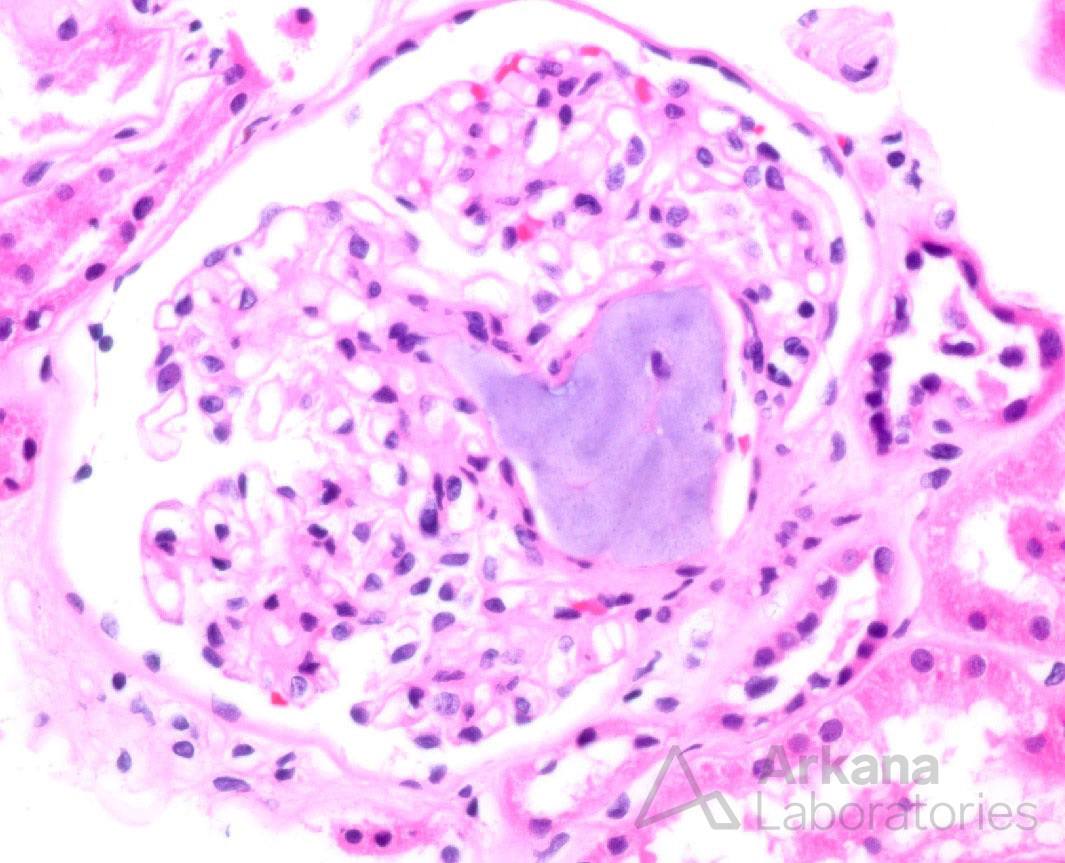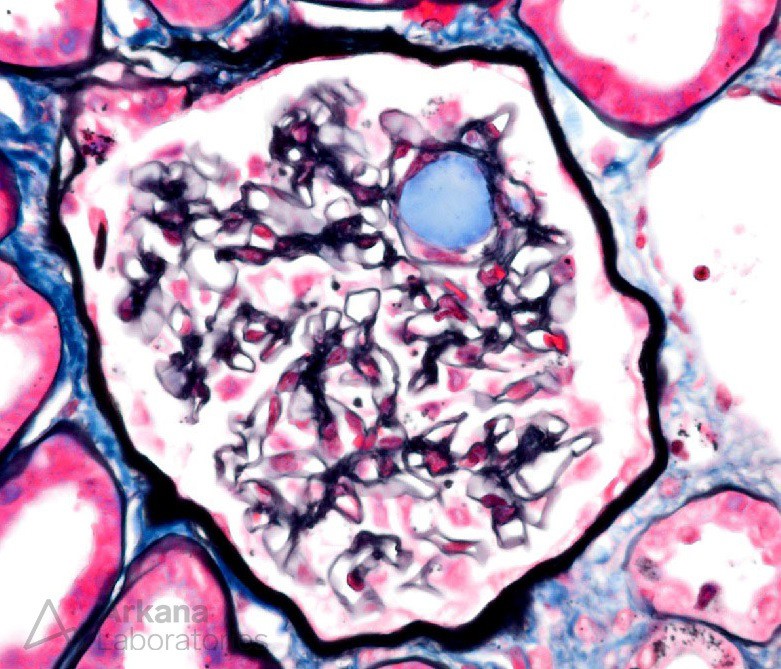Clinical presentation
A 60-year-old male with a history of diabetes mellitus, hypertension, and renal transplantation one year ago, presents with an elevated creatinine of 3 mg/dL (baseline creatinine around 2.0 mg/dL). He recently underwent angioplasty and stent placement for transplant renal artery stenosis.
Kidney biopsy findings
Figures 1 (H&E stain) and 2 (Silver-trichrome stain) show the main findings on kidney biopsy.
In the figures above, basophilic amorphous material is seen within the glomerular capillary loop and hilum. The material occludes and distends the glomerular capillary. The material is non-refractile and non-polarizable. Immunofluorescence studies show that the material is negative for fibrinogen (not shown) and other immunoreactants.
Differential diagnosis
Thrombotic microangiopathy, atheromatous emboli, calcium phosphate deposits, and exogenous material are all in the differential. Thrombotic microangiopathy shows fibrin platelet thrombi and fragmented red blood cells. Atheromatous emboli typically show cholesterol clefts and surrounding fibroinflammatory reaction. Calcium phosphate crystals are purple with H&E staining and show Von Kossa positivity.
What is the diagnosis?
The biopsy shows basophilic amorphous material within glomerular capillaries compatible with hydrophilic polymer coating emboli. Hydrophilic polymers are used to coat endovascular devices to reduce friction and improve maneuverability during endovascular procedures (renal artery angioplasty, abdominal aortic aneurysm repair, cardiac catheterization, and cerebral angiography). Emboli can occur days to weeks after the procedure. The hydrophilic polymer material is removed by hemodynamic stresses and released into the circulation where they form emboli in smaller vessels. A granulomatous foreign body reaction can sometimes be present. The most frequently affected organs are the brain and lungs.
Hydrophilic polymer emboli can also occur in allograph kidneys following angioplasty and stenting, as in this case. Risk factors include severe atherosclerosis, peripheral vascular disease, hypertension, hyperlipidemia, diabetes, and smoking. With renal involvement, patients can present with acute kidney injury and hematuria. Extrarenal involvement can result in stroke, myocardial infarction, and pulmonary infarction. Some cases may be clinically silent. Other exogenous materials under consideration like starch particles, cellulose, and talc show birefringence under polarized light. While atheroemboli are a more common cause of renal emboli, especially with a history of atherosclerosis and endovascular procedure, hydrophilic polymer emboli should also be in the differential.
References
Colvin, Robert, B. and Anthony Chang. Diagnostic Pathology: Kidney Diseases. Available from: Elsevier eBooks+, (3rd Edition). Elsevier – OHCE, 2019.
Chen CL, Chen NC, Wang JS. Acute hydrophilic-polymer nephropathy and acute renal failure. N Engl J Med. 2015;372(18):1775-1776.
Kudose S, Adomako EA, D’Agati VD, Santoriello D. Collapsing glomerulopathy associated with hydrophilic polymer emboli. Kidney Int Rep. 2018;4(4):619-623.
Quick note: This post is to be used for informational purposes only and does not constitute medical or health advice. Each person should consult their own doctor with respect to matters referenced. Arkana Laboratories assumes no liability for actions taken in reliance upon the information contained herein.




